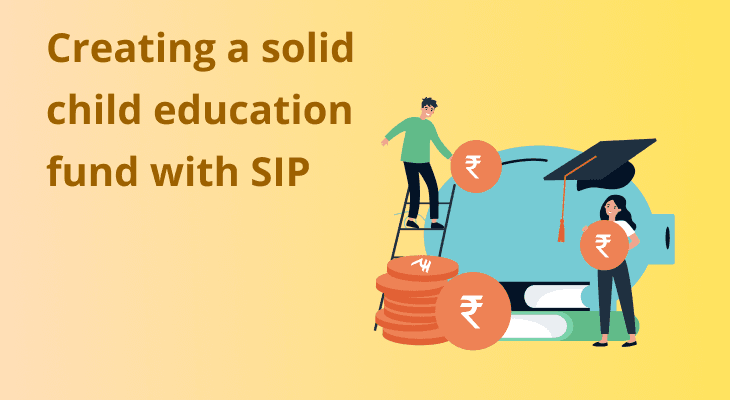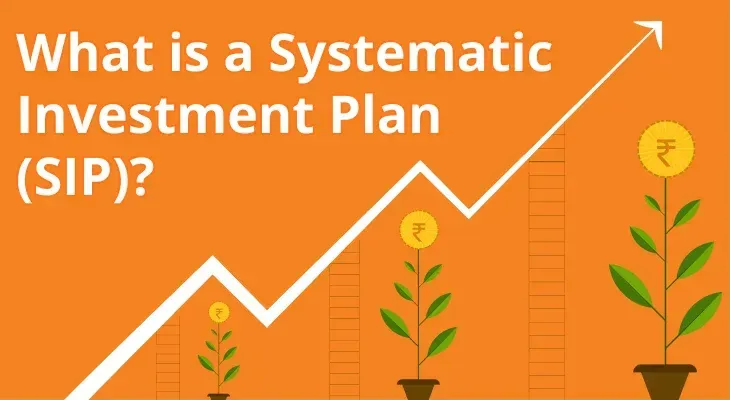
Creating a Strong Child Education Fund with SIPs
Years ago, a single Rs 20 note allowed Riya to buy her favourite bread and butter after school. Today, two decades later, she orders the same for ₹100, signalling a more than three-fold increase in price. Rising prices or inflation not only affect everyday products but also apply to services, including education.
With education costs rising, having a robust financial plan is more important than ever to help your child achieve their academic goals and create a better future. Mutual funds can make the task easier, particularly through a Systematic Investment Plan (SIP). This article explains the role of mutual fund SIPs in securing your child’s future.
Why should you opt for mutual funds while building an education corpus?
Mutual funds pool money from various investors and invest in multiple securities, such as stocks, bonds, and commodities, to earn a profit. Here are some reasons you may choose mutual funds for your child’s future.
Help prepare for rising cost of education
A 2020 National Sample Survey Office report revealed that the average expenditure on education nearly doubled over the previous decade, underlining the stark rise in costs. So, merely setting money aside or parking it in a bank account won’t suffice. To counter inflation, you must invest the earmarked money in instruments that offer inflation-beating returns.
Mutual funds, particularly equity funds, stand out as an effective choice in this regard. While they are inherently risky investments, they offer the potential for high inflation-adjusted returns in the long run.
Mutual funds offer professional management
Professional fund managers create and execute strategies on your behalf with the aim of optimising risk-adjusted returns. Their extensive experience allows them to navigate market ups and downs confidently, driving long-term, sustainable growth for investors.
Diversification
Unlike many other investments, mutual funds are inherently diversified. They invest in various securities, such as stocks, bonds, and other assets, reducing reliance on a single company, sector, or asset class. This diversification helps minimise risks and balance returns, as the outperformance of certain investments can offset the losses from others.
Mutual funds are classified into different types with different risk-return profiles. They offer exposure to different investment strategies, geographies, sectors, themes, market capitalisations, and more. You can choose the ones that best align with your financial goals and risk appetite.
Ease of investing
Investing in mutual funds is quick and straightforward, with digitalisation further simplifying the process. You can choose to invest in a lump sum or spread your investment across the year through an SIP. Lump sum investments are ideal when you have a large amount of surplus funds, such as a bonus or windfall. However, SIPs are more popular because of the many benefits they offer.
What are SIPs?
An SIP is a systematic way of investing in mutual funds. It allows you to divide your investment and contribute throughout the year based on your convenience, facilitating ease of investing. You can choose your SIP amount, date and frequency according to your preference.
By registering for an SIP, you authorise your bank to debit a specified amount on a specified date and credit it to the bank account of your mutual fund. The fund house allots units to you based on your SIP amount and the Net Asset Value, or the per unit price, of the mutual fund on that day.
Why should you start a mutual fund SIP for child education?
Let’s understand how SIPs help you create a significant corpus to support your child’s education.
SIPs are affordable
SIPs have easy entry rules. You can start with a small amount and gradually increase your investments to create a substantial corpus over time. Most fund houses allow investments starting from ₹ 500 per month, with some even accepting ₹ 100 per month. That said, to build your corpus faster, you must prioritise saving and investing more.
SIPs are flexible
SIPs automate your investments. You only have to register once, irrespective of your investment tenure. Also, mutual fund SIPs do not require a separate investment account, such as a demat and trading account, as in the case of stocks. Additionally, there are different types of SIPs for added flexibility, such as flexi and step-up SIPs for adjusting your SIP amount, perpetual SIPs for enjoying continued SIPs, trigger SIPs for capitalising on market opportunities, etc.
SIPs help tackle volatility
Market fluctuations impact mutual fund returns . SIPs offer the advantage of rupee cost averaging to navigate market fluctuations. By investing during different market cycles, you get units at different prices – fewer at high prices and more at low prices. This, in turn, averages out your cost of investment over time.
SIPs help you harness the power of compounding
Compounding enables you to earn returns not just on your principal amount but also on the returns that accumulate over time. It works well when you start early and stay invested for a long time. The flexibility and ease of investing that SIPs offer help you to start your journey early, invest consistently, and grow your money over time.
SIPs promote financial discipline
SIPs foster financial discipline by encouraging consistent saving and investing. This habit not only helps you become a mindful spender but also ensures you are on track to reach your targets within your desired time frame. Additionally, it sets an example for your child, inspiring them to develop financial discipline from an early age.
Tax benefits of investing in mutual funds for your child’s education
Out of the many mutual fund schemes available, equity funds are particularly popular for creating an education fund because they have the potential to offer high returns in the long run. If you choose to invest in an Equity-linked Savings Scheme (ELSS), a type of equity fund, you can enjoy certain tax benefits.
ELSS funds allow you to reduce your taxable income by up to ₹ 1.5 lakh annually under Section 80C of the Income Tax Act, 1961. Moreover, the gains on your equity investments (including shares) also offer certain exemptions – gains up to ₹ 1.25 lakh each year are exempt from tax. However, you must note that ELSS comes with a lock-in period of three years, making them suitable for longer investment horizons.
How does an SIP calculator help in planning your child’s education?
Technology is a boon in every aspect of life, including education planning. Although there isn’t any specific education SIP calculator, you can use a regular SIP calculator for estimating investment returns and making calculated investment decisions for your child’s future. By entering your SIP amount, investment tenure and expected return rate, you can determine the future value of your investment.
Additionally, reverse SIP calculators can help you determine the right SIP amount to reach your target within the desired timeframe. To know how much you should invest each month, you must enter your target amount, investment tenure and expected rate of return. For instance, if you wish to accumulate ₹ 10 lakh after 10 years for your child’s university admission and expect your fund to deliver 12%, the calculator will suggest starting a monthly SIP of ₹ 4,305.
Knowing the SIP amount helps you save systematically for your goal. It also helps with overall budgeting and financial planning.
The right kind of education can make or break your child’s future. However, quality education comes at a high cost. Choosing a mutual fund SIP for education planning can help manage these expenses without financial stress.


